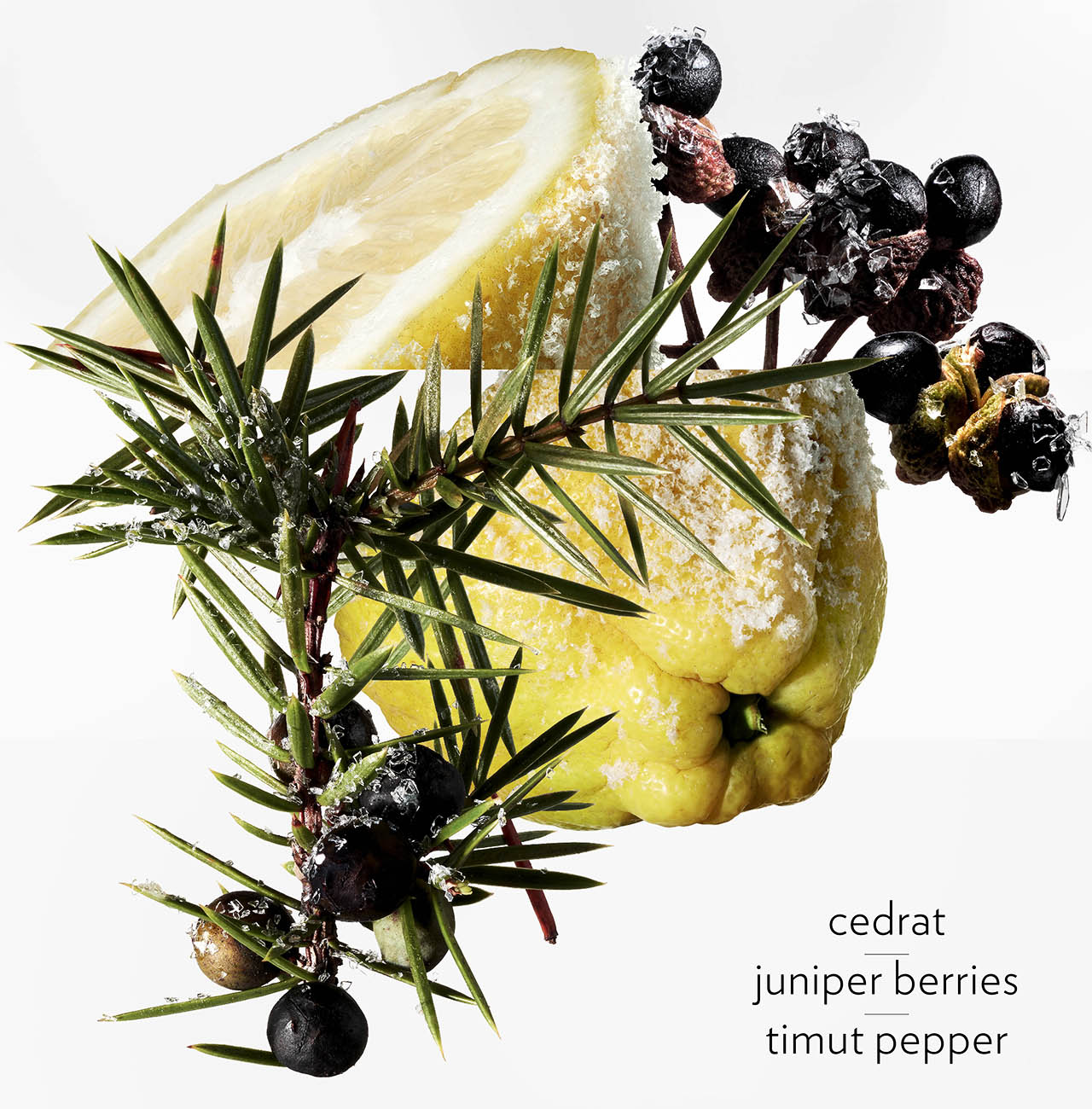Everything
One thing that can be said for Christine Nagel, in-house perfumer for French luxury house Hermès, is her ability to paint a brilliant portrait of her fragrances. Talking to ICON about her latest work for the maison Terre d’Hermès Eau Givree, a new incarnation for the award winning Terre d’Hermès, she weaves a wonderfully rich picture of contrasting inspirations with a surprising opening: “I think I have to talk about frost, and ice, to explain.”

“When I think of [the original] Terre, the first thing I think about is the earth – the red earth, the warm wild which was there in the first opus. It is beautiful. And I was really touched at one point in time with this vision of frost on the soil. I find that very beautiful aesthetically. Because frost is alive – it protects the earth, and when it melts it feeds the earth, it feeds the soil.”
It’s a striking visual, and one that perfectly portrays the olfactive journey of her new creation – a bitingly – and, actually yes, frosty – fresh fragrance that slowly reveals the familiar petrichor and warmth of the original best selling fragrance that cleverly extrapolates on the brand’s passion for adventure and travel. For at the heart of the Hermès DNA is freedom, one that’s born of the landscape, and the gift to traverse it courtesy of the brand’s earliest days making saddlery.
Where Terre d’Hermès travelled through the fresh warmth of aridity (the advertising campaign was set against the palette of the red sands of a desert) Eau Givree goes polar, hitting you with an arctic blast of iciness. This, says Nagel, was created by challenging the traditional understanding of freshness. In the first Terre, it was achieved by a layered accord of citruses (grapefruit and orange) that was bolstered by notes of warm pepper and the earthy roots of vetiver, cedarwood and patchouli. For Eau Givree, Nagel wanted to take the wearer into a vista: one of earth and ice.
“With this new creation, I wanted to challenge the idea that freshness is synonymous with a certain lightness,” Nagel explains. To achieve this, three notes in particular were chosen that when combined would provide a modern interpretation of the classic “fresh” accord: the zest of citron, the herbaceousness of juniper berry (yes, as in the gin) and the sparkling fizz of timut pepper. If you’ve ever had the chance to drink a botanical gin on the rocks in the middle of a snowfield with a wedge of lemon, you’ve come close to experiencing Eau Givree.

Freshness, and redefining it, seems to be a signature of Nagel’s career. Only last year she revealed perhaps her most daring work for Hermès – the new pillar fragrance for men, H24. Verdant and almost neon in the way it lights up the room, it was a novel take on a floral fragrance for men using the tobacco-like note of narcissus combined with the vegetal greenness of clary sage and rosewood lifted up by sclarène, a molecule that projects a hissing dry-clean like aroma akin to water vapour mixed with the smell of the hot metal and wool. Elsewhere, in Eau des Merveilles Bleue, also for Hermès, it was the freshness of salt water and in Eau de Rhubarbe Ecarlate, it was the tart sweetness of rhubarb.
“Since I have been working at the house of Hermès, I have always tried to bring freshness with other elements. In Eau Givree, I use citron but I use it more like a backbone upon which I bring that biting fullness of juniper berry. But when you smell it, the real freshness comes from the timut pepper which is what gives Eau Givree its bite, its iciness, its crunchiness [like frost].”

This desire to create new interpretations, to break new territory, in olfactive experiences is very much like the painter mixing their paints to develop new shades or colours, says Nagel.
“When you use colours in painting, you’re looking for the third colour. And when you are making a perfume, it is just like painting. When you combine juniper berry with timut pepper, you don’t smell the two, you smell the result. The combination of the two. The search for the perfumer is always to seek out that third fragrance.”
How Eau Givree fits into the broader Terre family, Nagel is philosophical when it comes to defining it. Traditionally, additional bottles that find their source code from an original scent, tweaking it seasonally or annually, have been described as flankers. Not so for Terre, says Nagel. “What we do with Terre is very different,” Nagel tells ICON.
“That word flanker…I don’t like that word. I respect the formula of Terre so much, and I love Terre so much, and it is so strong, when I work on Terre I want to give it another strength. Not just give it a tiny variation.”
If not flanker, what then? Perhaps the best way to describe it would be a new chapter in the story of Terre. Like in a book, each chapter builds on the character of the previous one with new details that gives additional depth to the story as it moves forward, often surprising us with a character development or plot twist. And so Eau Givree, which addresses the shifting boundaries of masculine accords while giving new meaning to the term fresh. Et voila.
Terre d’Hermes Eau Givree is now available online and in store at Hermès.